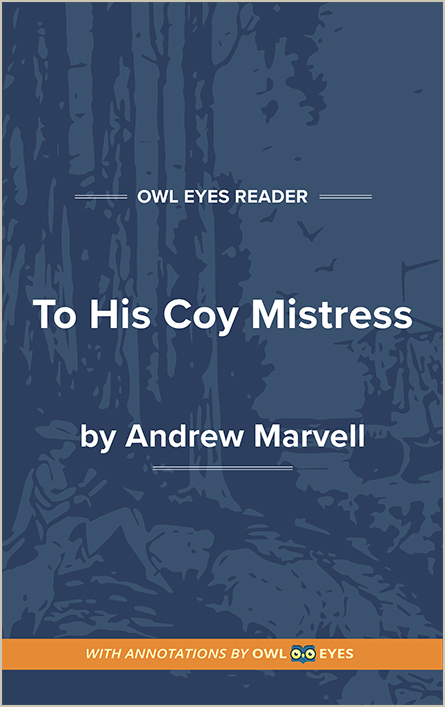Analysis Pages
Imagery in To His Coy Mistress
Kinesthetic and Visual Imagery of Time: Time is most memorably presented as a pursuer riding a “winged chariot.” The visual imagery of a chariot implies speed and adds to the overall concept of time being an enemy in that no human could hope to outrun a “winged chariot.” No matter how hard the speaker and his lady struggle, time will always catch up to them. However, time is also imagined through kinesthetic imagery as something tangible that can be “devoured” by “amorous birds of prey.” The first image is built into the second stanza, where the speaker establishes time as the enemy. The second image is built into the third stanza, where the speaker is calling his lady to action as they try to win a victory over time by metaphorically “devouring” every second of it that they have left.
Tactile and Visual Imagery of Death: Death-related tactile imagery is used heavily in the second stanza as a way of emphasizing that it is not just time that is the enemy but also the impending reality of the grave. The speaker remarks that “worms shall try that long preserved virginity,” crafting a chilling and somewhat grotesque combination of visual and tactile imagery for the mistress regarding what will become of her “quaint honor” upon her death. He also employs images of ashes and dust to thoroughly impress upon her, and the reader, that nothing awaits them in death but the cold embrace of a “marble vault.”
Imagery Examples in To His Coy Mistress:
Text of the Poem
🔒"worms..." See in text (Text of the Poem)

